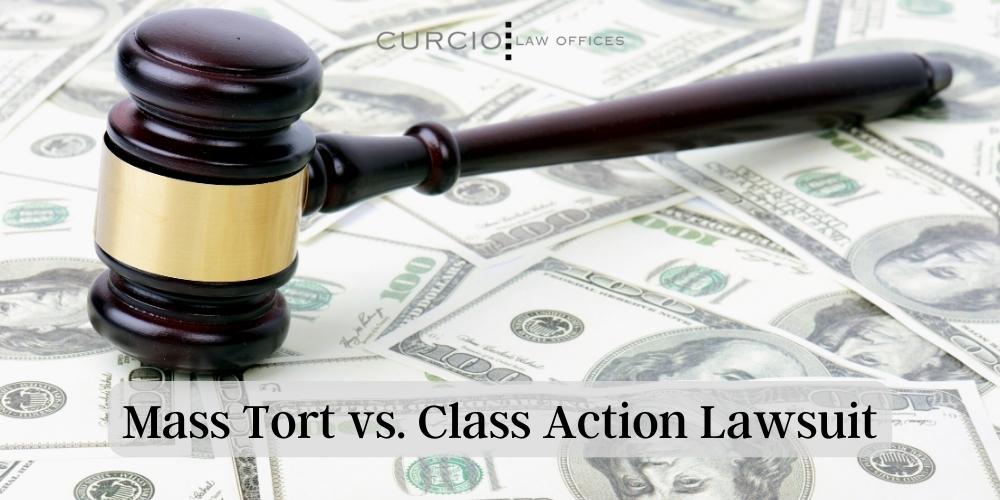Checking Out Class Action Legal Actions: What You Need to Know
Class activity legal actions have ended up being progressively common in today's legal landscape, with individuals signing up with forces to seek redress versus organizations and companies. In this discussion, we will discover the ins and outs of class action claims, dropping light on their interpretation, the demands for filing, and the potential benefits and drawbacks included.
The Meaning of Class Activity Claims
A course activity legal action is a lawful action filed by a team of people that have similar claims versus an accused. Class action suits are commonly brought when the number of possible complainants is as well big for private legal actions to be functional.
Among the vital elements of a class activity lawsuit is that the lead complainant, additionally known as the class agent, stands for the passions of all the course participants. The court appoints the lead complainant based on their ability to rather and properly represent the class. The lead plaintiff works very closely with the class action lawyer to build a strong instance and look for payment or various other remedies on part of the whole class.
In order for a course activity suit to continue, the court has to accredit the class. This indicates that the court establishes that the lawsuit meets certain needs, such as numerosity (a big adequate number of course participants), commonality (common inquiries of regulation or fact), typicality (the claims of the lead plaintiff are typical of the class), and adequacy of representation (the lead plaintiff and class advice can representing the course's rate of interests) Once the class is licensed, the lawsuit can move on, and any kind of judgment or negotiation got to will relate to all course participants unless they pick to opt-out.
Class action claims serve an essential objective in offering accessibility to justice for people who might not have the sources to seek their claims independently. They additionally promote performance in the lawful system by combining comparable insurance claims right into a single action, reducing the burden on both the court and the parties entailed.
Demands for Submitting a Course Activity Legal Action

An additional demand is that the course should be sufficiently numerous. The exact variety of class participants needed may differ depending on the jurisdiction and the nature of the instance. Nonetheless, it is generally expected that the course needs to be big enough that signing up with all the specific plaintiffs into a single lawsuit is more efficient than having numerous separate legal actions.
In addition, it is essential that the course agent, who is the specific or entity bringing the suit in behalf of the class, has normal claims and defenses to those of the class members. The representative needs to additionally have the ability to appropriately and fairly represent the rate of interests of the whole class.

Advantages and Drawbacks of Course Action Lawsuits
Class activity suits offer both advantages and drawbacks for plaintiffs and offenders entailed in the legal process. On the one hand, among the considerable advantages of course action lawsuits is that they provide a affordable and efficient means for individuals with comparable insurance claims to pursue justice jointly. By consolidating countless comparable cases right into one suit, course actions simplify the legal procedure and save time and resources for both offenders and plaintiffs.
One more advantage of class action lawsuits is that they enable people with limited sources to seek payment for their damages. In instances where the prospective healing is small, specific suits may not be economically sensible. However, by joining pressures in a class activity, plaintiffs can pool their resources and raise their possibilities of acquiring a fair visit site resolution.
In addition, course actions can advertise social change by holding companies liable for their activities. By accentuating widespread misconduct or defective products, class actions can pressure business to alter their methods, enhance product security, or carry out reforms.
Nevertheless, course actions likewise have disadvantages. One prospective downside is that private complainants might have limited control over the litigation process and the ultimate outcome of the case. The lead complainants and their lawyers generally make essential decisions on behalf of the entire course, which might not constantly straighten with the specific interests of each course member.
In addition, class activities can be lengthy and taxing, usually taking years to get to a resolution. The intricacy and size of these lawsuits can lead to hold-ups and extended litigation, which can be frustrating for both complainants and accuseds looking for a timely resolution.
Steps Associated With a Course Action Legal Action
The procedure of a class activity suit generally starts with the recognition of a potential course and the filing of a problem. Once a team of individuals that share comparable insurance claims versus a defendant is recognized, the lead complainant, or class agent, files a complaint on part of the whole class. This complaint lays out the supposed wrongdoing and seeks damages or other alleviation for all members of the course.
After the complaint is submitted, the court will identify whether the situation fulfills the needs for class certification. These requirements usually include numerosity (a huge enough class), commonness (comparable legal insurance claims), typicality (the lead complainant's claims are representative of the course), and competence of representation (the lead plaintiff and their lawyer can adequately represent the course's passions)
If the court certifies the Clicking Here class, notification is provided to all prospective course participants, giving them the chance to opt-out if they desire to seek their own private insurance claims - BioVie class action lawsuit. If an adequate variety of course participants continue to be, the case will proceed to the discovery stage, where both sides collect proof and details pertinent to the claims
Following discovery, the parties may take part in negotiation arrangements or continue to test. If the instance mosts likely to test and the course dominates, the court will certainly establish the ideal problems or relief to be awarded to the course participants.
Current Spots Course Activity Legal Actions
With a strong understanding of the actions entailed in a course activity legal action, it is currently vital to examine some current landmark situations that have made a considerable resource influence in the lawful landscape. Future FinTech class action lawsuit. These instances have not just formed the means course activity lawsuits are conducted but have additionally brought around adjustments in various sectors
One such landmark instance is the Volkswagen emissions rumor, which led to the largest course action negotiation in automotive background. This deceptiveness impacted millions of customers worldwide, leading to a class activity lawsuit.
An additional noteworthy instance is the Johnson & Johnson baby powder legal action. Thousands of females filed legal actions against the firm, asserting that their talcum powder products created ovarian cancer. In 2018, a court awarded $4.7 billion in problems to 22 plaintiffs. This situation increased concerns regarding the safety and security of talcum powder and triggered Johnson & Johnson to change their product labeling.
These recent spots instances demonstrate the power of course action legal actions in holding firms liable for their actions and seeking justice for afflicted individuals. They serve as instances of how course activity suits can bring about significant adjustments and secure the legal rights of customers.
Conclusion
Finally, class action lawsuits are a legal mechanism that enables a team of people to jointly seek justice for a typical complaint. While they provide numerous advantages such as efficiency and cost-effectiveness, there are additionally drawbacks such as prospective for restricted payment and prolonged legal procedures. Comprehending the demands and steps associated with submitting a course action suit is critical for people looking for to pursue this legal avenue. Recent landmark course activity claims have highlighted the importance of such cases in supporting for customer legal rights and business responsibility.
One of the crucial elements of a course action lawsuit is that the lead complainant, also recognized as the class representative, stands for the interests of all the course members.In order for a course action lawsuit to proceed, the court must license the class. This indicates that the court identifies that the legal action satisfies particular demands, such as numerosity (a huge enough number of course members), commonality (usual concerns of regulation or truth), typicality (the claims of the lead complainant are common of the course), and adequacy of depiction (the lead plaintiff and course counsel are capable of standing for the class's rate of interests) As soon as the class is accredited, the suit can relocate ahead, and any judgment or settlement got to will use to all class participants unless they pick to opt-out.
The procedure of a course activity legal action typically begins with the recognition of a possible class and the filing of a problem.